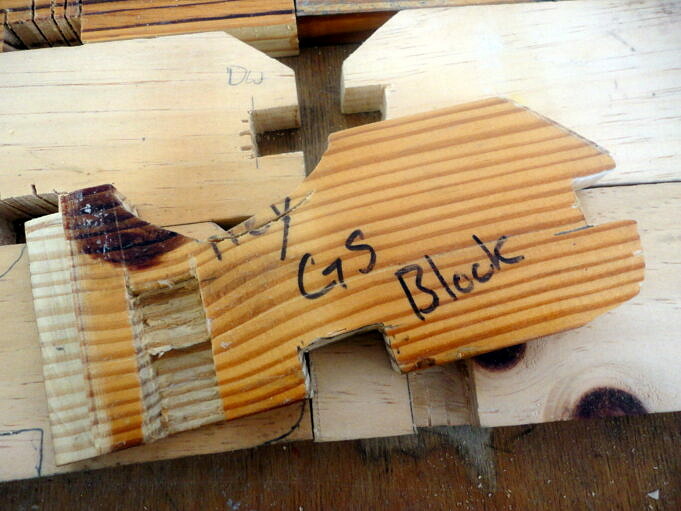This series of posts on the Gottshall block, which I believe contains the most woodworking-related words per foot, would be the winner of an award. And if there were an award for the most harassment per board foot, my coworkers would win. At our weekly meeting this morning I announced that I would be finished with this exercise, as soon as I made the 45 degree cut across the corner. Amidst the snide remarks and general jeering was the suggestion that I walk across the shop and use the miter saw. Although I thought it was cheating, I knew I was cheating.
My bench hook’s back has a pair 45-degree saw kerfs. Although I don’t recall what I was doing at the time, I do remember using a block of wood that I had cut with my miter saw to guide my backsaw. I finished the last cut by knitting along the layout lines. I had to trim a bit with the chisel in order to return to the layout lines.
The completed block is shown on top of a SketchUp printout. Because this is a shop-class sort of exercise, I thought I should give it a grade, but putting a number or letter score on this thing raised some issues. The big one is that it has no context; there isnt a mating piece to fit, and thats the way I judge most of my work. Its also the way I work; I make mortises first and then make tenons to fit. If the mortises grow in the first step, there is a way to compensate in the next.
There is also a matter of the tools I used, all the cuts were made with a saw and a chisel. A few dozen tools are my main purpose. They are used to trim the last bit of the saw and chisel, to make the work easier. It was fascinating to see how close I came without using the tools. While I believe I did pretty well, it isn’t perfect. When Mike Wenzloff suggested this, he noted that he had never produced a perfect example, but that really isnt the point. Like all good exercises, there will be some aches and pains at the end that will make the work better the next time around.
It doesn’t matter how close you are to the judge, or what you choose not to see. The rabbet on the end is a good example of this. It is square across the board and down to the end, which makes it look very appealing to the naked eye. It is 1/163 cm too far in. It was the quest for perfect squareness that made it less than perfect. All of the errors I made in this are of that nature, so there are a few places where the surfaces are great, but they are just past the line. And others where the lines are still visible, but the surfaces within are a little out of whack. It’s about making decisions and knowing when to stop.
If you ask me, I will give myself a B/C+ for this. Not the best, but not too bad, and Im doing better than the Cleveland Browns, who got me thinking about this in the first place with this post. I don’t have to travel to Baltimore next Sunday.
Recommendations for Product
These are the tools and supplies we use every day in our shop. We may receive a commission from sales referred by our links; however, we have carefully selected these products for their usefulness and quality.



